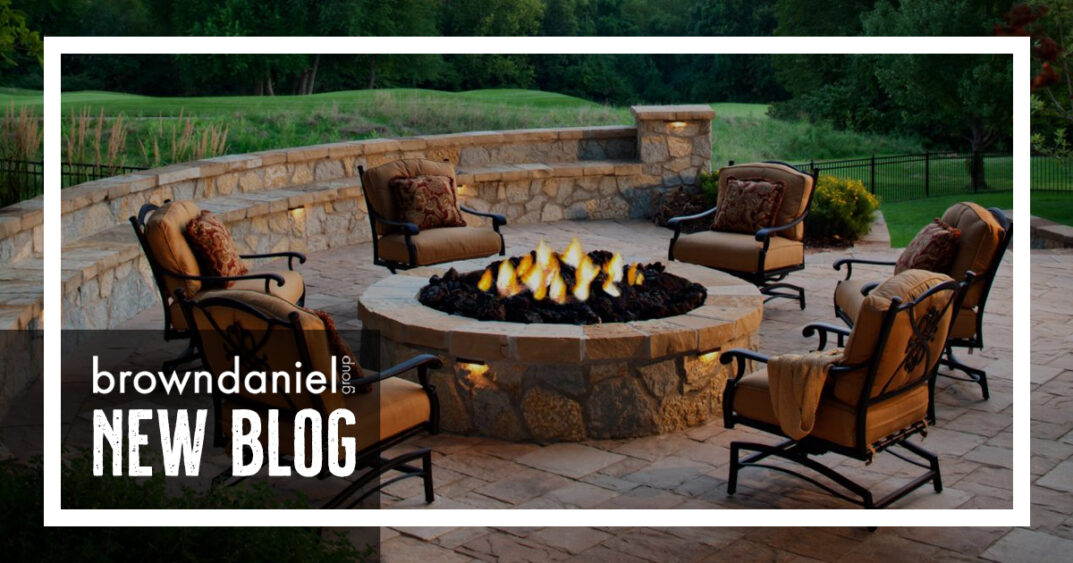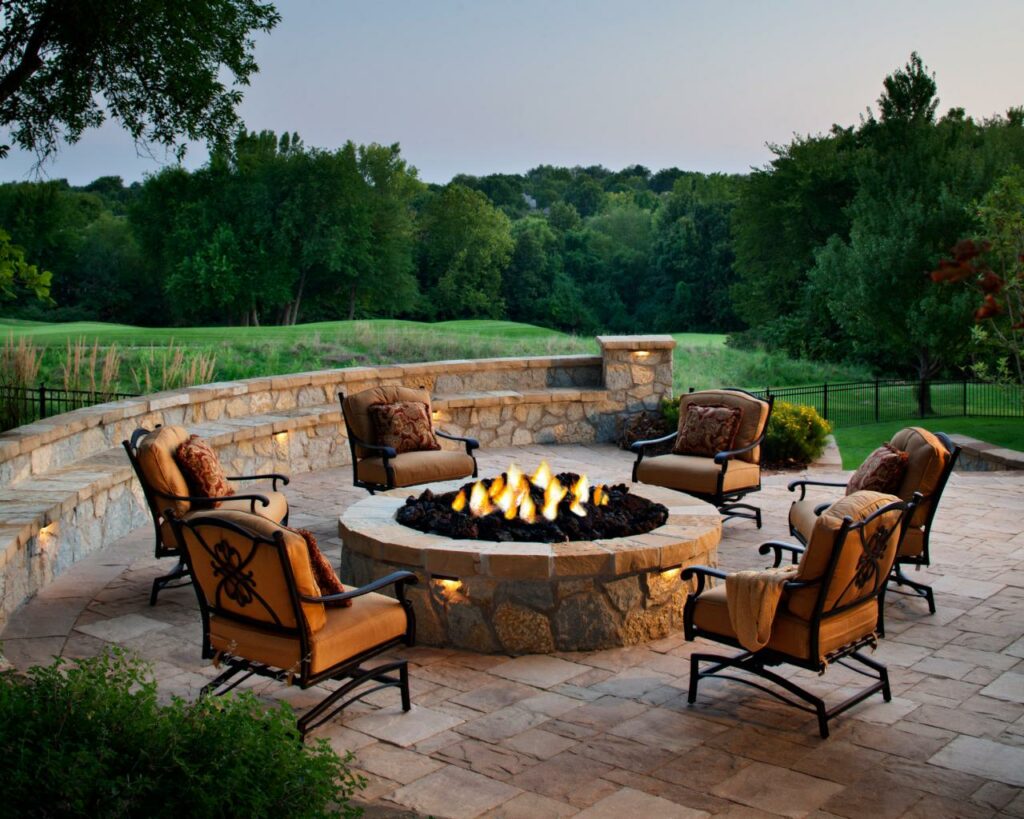
Whether you are indoors or outdoors, there’s something both relaxing and invigorating about the warm glow of a fire. Many of us long for the first cool nights of autumn when we can finally light up our fireplaces and enjoy the flames, even if we are using the more common gas logs rather than a true fire. But what if the family room fireplace is no longer providing enough fire to satisfy your need for the warm crackling flames? More and more homeowners are installing backyard fire pits at their homes and the trend shows no signs of waning. Fire pits can be the perfect spot for family and friends to gather on summer and fall evenings, and who doesn’t love s’mores? We’re here to tell you everything you need to know about installing a fire pit at your house.
Fire Pit Basics

The name may be misleading, because a fire pit isn’t actually a pit at all. In most cases, backyard fire pits are actually placed in a raised structure to allow for proper airflow to the flames and to keep the fire pit safe from flooding. Fire pits come in many shapes and sizes – the most traditional shape is round, perfect for setting up adirondack chairs around the fire. But they can also be square, oblong, or any shape that fits your space. As far as material, they can be constructed out of stone, concrete, metal or even tile.
Some of the more expensive and extravagant types are professionally installed and can cost well into the thousands of dollars. On the other end of the spectrum, many people opt to make installing a fire pit a DIY project where they can spend just a few hundred dollars on materials and perform the work themselves.
Fire Pit Fuels
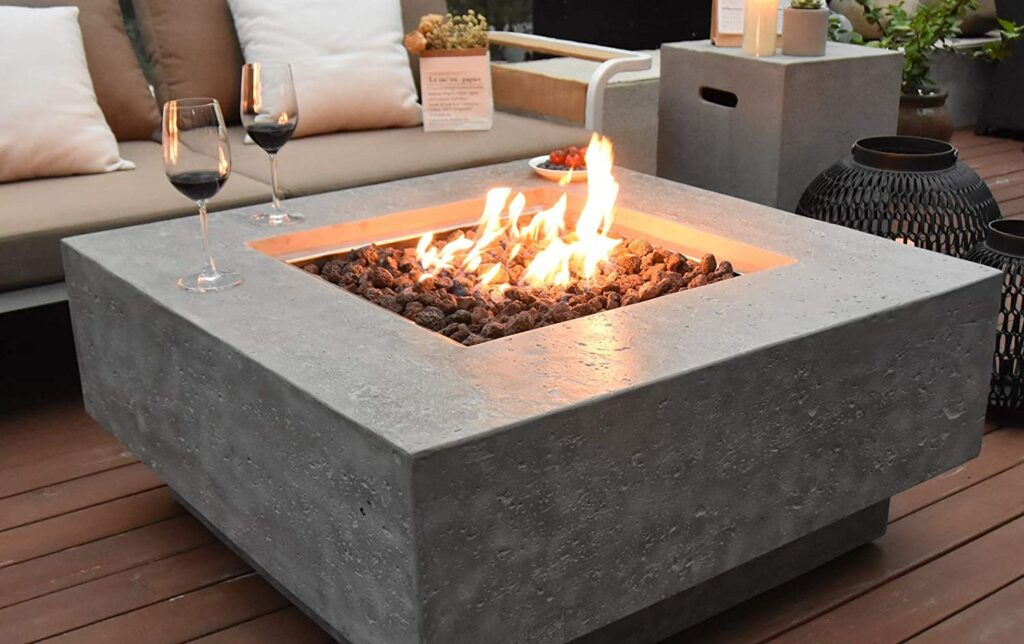
One of the biggest decisions homeowners make when they decide to install a fire pit involves whether to choose a pit that uses wood or gas for the fuel. Wood-burning fire pits are the most common, especially for those who are installing them without professional help. Wood-burning pits are also the much cheaper option, and are significantly easier and faster to install. In fact, you can find premade fire pits that require very little assembly and can be ready to use in a matter of minutes.
Gas-burning pits will almost always need to be professionally installed, as they usually involve running an additional gas line to the location where you are putting the pit. They also cost more than their wood-burning counterparts. However, the additional costs for a professionally installed gas fire pit may be worth it to you, because gas-burning units provide their own distinct type of ambiance, and are much easier to light and maintain during use.
Pros and Cons of Wood vs Gas
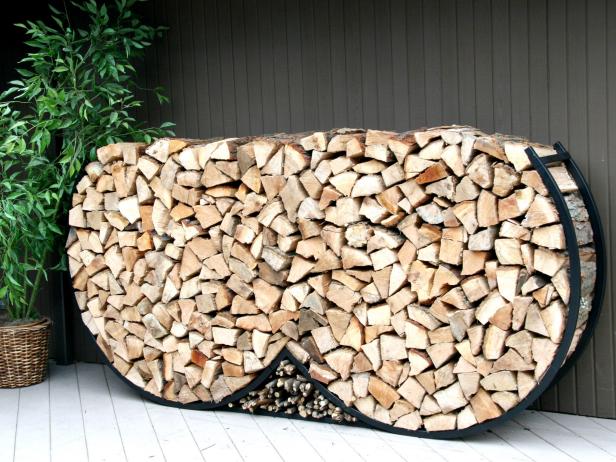
The way wood and gas burning fire pits operate and the feelings they give are a bit different. With a wood-burning fire pit you have a fire similar to what you will find at a campsite. This means you get the authentic sound of burning wood crackling and hissing, along with the smoke smell that can be quite nostalgic and enjoyable. A gas-burning pit will give you the look of a natural fire, but without these sounds and smells that remind you of a true campfire. Fore some people this might be the main selling point of a gas powered unit, especially if allergies and asthma make campfire smoke hard to tolerate. With a gas pit you won’t head inside for the night with your clothes immersed in the smell of fire and smoke.
Some people find a gas fire pit more convenient to maintain, since the gas is supplied by your gas utility along with the rest of the natural gas coming to your home. With a wood-powered pit you will need a location to store wood and you will need to frequently purchase more. While you are using your wood fire pit, you will need to continually stoke the flames and monitor them to keep the fire from burning out. This is all after you spend time building the fire. A gas pit needs to only be turned on and then back off when you are finished using it, meaning there is almost no maintenance needed per use. You’ll need to clean out the ashes of a wood-burning fire pit regularly, but with a gas fire pit you’ll have very little regular maintenance.
Safety
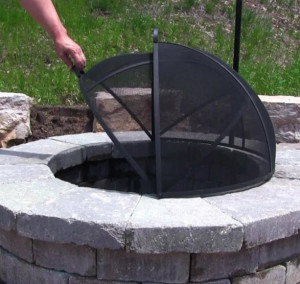
The embers from a wood-burning fire pit can be a fire hazard, especially on windy nights and when conditions are very dry. You’ll need to keep your eyes on the flames, and on the embers long after the fire has been put out. You should also pay close attention to weather reports when you want to use your wood burning fire pit. When conditions are dry and there are burn advisories in place, local municipalities can actually require that you do not use your fire pit until conditions improve. You also want to be wary of building a fire during periods of heavy winds. When winds are strong and unpredictable, it can be hard to keep control of the embers your fire produces. With a gas powered fire pit, you will need to be aware of the potential for leaks, and call your gas utility immediately if you smell natural gas around the pit.
You’ll also want to play it safe where local rules and guidelines are concerned. If you live in a neighborhood with a homeowners association, you may need to get permission before you install a fire pit. Some neighborhoods have preferred contractors if you are having one professionally installed, while others will not allow you to perform the installation yourself. There may also be specific requirements you must follow in terms of location, proximity to your home as well as to property lines with neighbors. Ignoring these rules could mean you will pay fines for installing a fire pit without permission, and some of the more strict HOAs will even require the removal of anything that has been installed that does not follow all rules and regulations.
Fire Pit Location
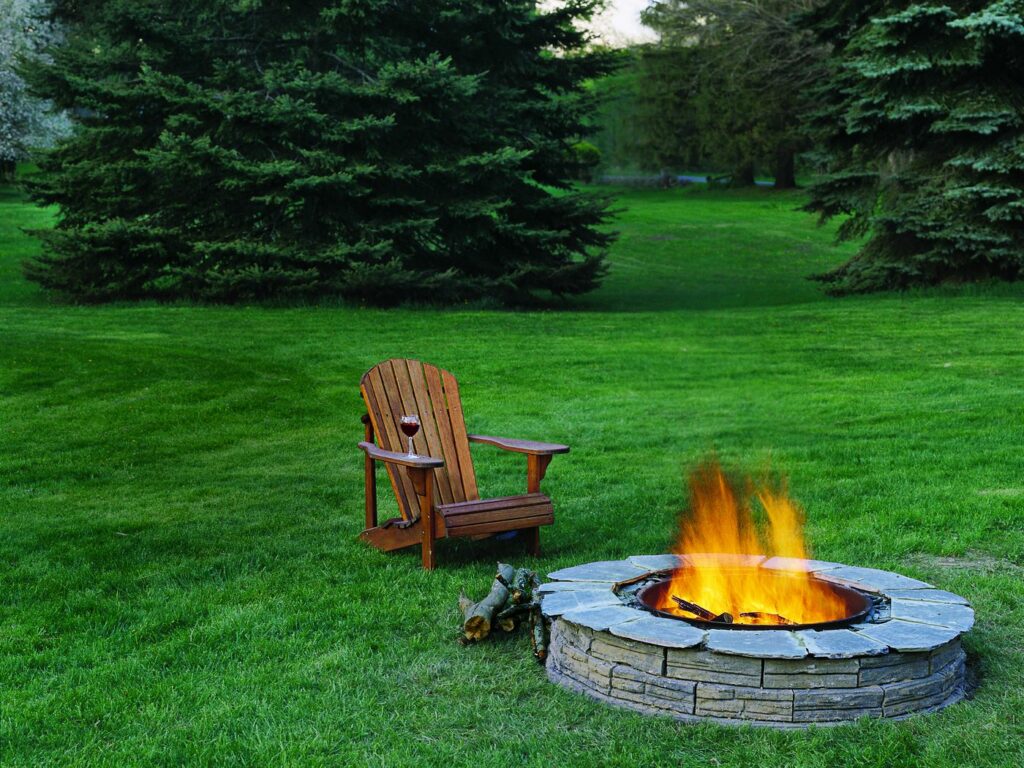
After you’ve decided what type of fire pit you want, how can you determine the best place to install it? This is mostly a concern for wood-burning fire pits, as they come with their own set of requirements and potential dangers. Fire safety codes can vary by the municipality, but the basic recommendation is for you to locate your fire pit approximately 10–20 feet away from any flammable structure, such as your house, a fence, trees, or shrubs. If you do decide to locate your fire pit underneath a structure such as a gazebo, or beneath tree cover, make sure there is enough room between the fire and any other structure to allow for good airflow. This is both to avoid unnecessary fire danger, and to make sure the smoke doesn’t hang in the air, trapped right around you and your guests who are enjoying the fire.
Your wood-burning fire pit should also be located on a level, non-flammable surface. Make sure that embers cannot land on potential fuel such as dead leaf piles, dry grass or mulch. You should also make sure to locate your fire pit near a reliable and easy to use water source, in case you need to quickly turn a hose on the flames should they grow out of control, or if wayward embers find a flammable material such as those mentioned above.
Fire Pits for Smaller Spaces
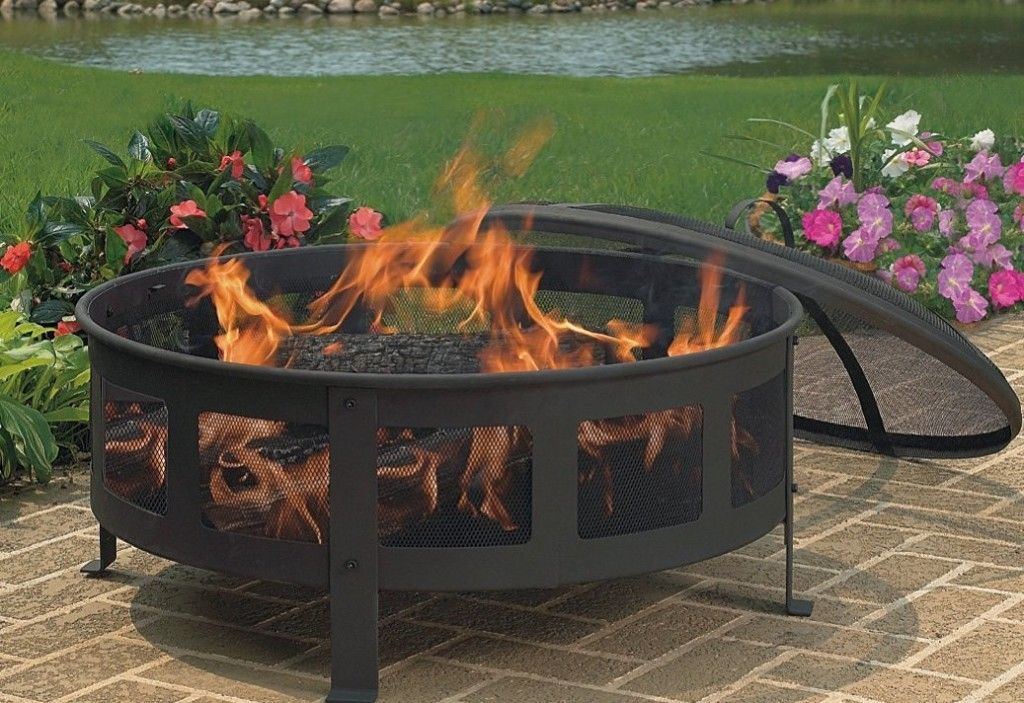
What if you have only a very small space to work with, but you still want the look and feel of a fire pit? You might want to consider a smaller, portable version rather than a traditional built in fire pit. These compact models can be found at your local home improvement warehouse or garden store, and they can easily be stashed in a garage or shed until you want to use it. You can bring the fire pit out only when needed, but keep it out of the way when you don’t want to overpower an already small backyard space.
Tips and Suggestions for Wood Burning Pits
While you are using your fire pit, experts recommend keeping a few things in mind:
- Stop adding wood to your fire approximately one hour before you plan to wrap things up for the night. This will give embers ample time to die down before you are ready to head indoors.
- Scoop out and dispose of ashes after every use, but only once they are completely cooled. Leftover ash can make your next fire harder to start.
- Use the right size wood for your fire pit. The ends of the wood should not hang over the side of the pit.
- Never throw paper or garbage onto the fire. Small bits of burning paper can easily be picked up by a small breeze, leading to a potentially dangerous fire situation.
- Keep a close eye on children and pets while you are using your fire pit. Make sure young children understand the potential dangers of the fire pit and that it should not be approached when in use.
- Don’t use fire accelerants such as lighter fluid or gas on a fire pit, even if you are having a difficult time starting a fire. This can cause a dangerous explosion.

